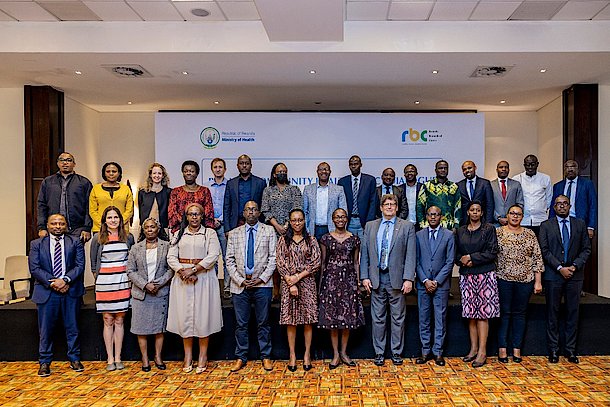The Ministry of Health launched the policy dialogue on Rwanda community health sustainability and resilience to gather different views from key stakeholders to guide the ongoing community health reforms. The Dialogue was held on June 7, 2022, at Serena Hotel in Kigali.
Rwanda Community Health program started in 1995 with about 12,000 volunteers at cell level for mobilizing communities through health education to seek medical care in health facilities. The number of Community Health Workers expanded up to 58,567 in 2018 with it the service packages as well.
As he opened the Community Health Policy Dialogue, Dr. Daniel NGAMIJE, Minister of Health in Rwanda highlighted an important contribution made by Community Health Workers in the reduction of maternal and child mortality and in improving health status in Rwanda as it was confirmed by an evaluation conducted in 2016.
“Community Health Workers contributed a lot to the reduction of maternal and child mortality in Rwanda, and they helped improve health status of the Rwandan population “ Said Dr. Ngamije.
Subsequently, this dialogue aimed at providing clear guidance on structure of CHWs at village level as well as recruitment criteria of new generations considering their motivation, retention and remuneration. Additionally, sharing new ideas of investing in community health and alternatives options to increase funding source and funding mechanisms. Lastly, to ascertain the streamlining of CHWs digitization which require an advanced level of education.
The community health programme evaluation conducted by LSTMnews recommeded to redesign an integrated training approach in one single package where Community Health Workers are equipped to provide all community health services) and establish a replacement model of ageing by young Community Health Workers (20 - 45 years).
From 1995 when the community health programme started to the piloting of polyvalent model in 2021, this is an outline of a 27-year journey milestones.
From 2015 onwards, the role of CHWs was upgraded from health education and promotion of facility-based deliveries to treating the under-five children for major killer diseases ( i.e simple malaria, pneumonia, and diarrhea) including screening children with anemia and malnutrition and referred them to the health centres for immediate care and support. As a result, the number of CHWs was increased from 12000 to 45000 and then to 60,000 in 2011 where each village had 4 CHWs. However, in May 2012, the Ministry of Health and Ministry of Local Government decided to remove the CHWs in charge of Social Affairs in all the villages. The number of CHWs dropped from 60,000 to approximately 45000 again. In 2018, the Ministry of Health again increased the number of CHWs 45,000 to 58,567 due to one more CHW per village in rural and peri-urban areas added to cover additional service package of health promotion with focus on hygiene and nutrition, and reinforce the existing three who wee overloaded.
